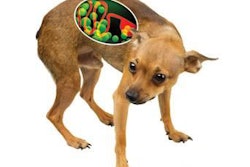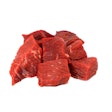Approximately 55% of dogs and 53% of cats in the U.S. are considered overweight or obese. The domestication of dogs and cats and, more recently, their anthropomorphism, have drastically changed their environment and social behavior. A greater manifestation of chronic diseases is observed with pet obesity (e.g., insulin resistance, type-2 diabetes, musculoskeletal disorders).
The field of nutrigenomics focuses specifically on the mechanisms by which nutrients and dietary bioactive molecules affect gene expression. The main objective of this review is to discuss factors involved in the etiology of pet obesity and demonstrate how the field of nutrigenomics has been used to better understand and characterize this disease. Initial studies focused on the sequence and functionality of a few specific genes, such as leptin and adiponectin, and identified their association with obesity. Subsequent studies focused on gene expression levels across tissues and how they were impacted by weight status, or if animals were intact, spayed or neutered.
Dietary interventions to induce obesity, promote weight loss or alter dietary nutrient profile have also been investigated. Diets including prebiotics, green tea extract or increased concentrations of protein have been shown to modify the expression of several genes related to glucose and lipid metabolism in adipose and skeletal muscle tissues. In general, the outcomes derived from these studies demonstrated that dogs and cats share similar adipokines and hormones to other species, and they are affected in a similar fashion during obesity. They also indicate that gene transcription modifications may preclude clinical signs, which may become a useful tool in the management and prevention of obesity.
Source : M.R.C. de Godoy and K.S. Swanson, 2013. Nutrigenomics: Using gene expression and molecular biology data to understand pet obesity. J Anim Sci online, January 2013. doi: 10.2527/jas.2012-5860
















